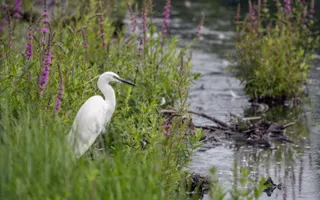Hemlock water dropwort facts
Scientific name: Oenanthe crocata
Family: Apiaceae
Origin: Native
Type: Perennial
Hemlock water dropwort and our canals
Found along the wet edges of our canals and rivers, this flowering plant from the carrot family is extremely toxic. While the leaves can smell of parsley or celery, all parts of the plant are poisonous and can be fatal to livestock and humans – although incidents are low. There are, however, a few insects that feed on hemlock water dropwort without feeling its adverse effects.
Although critically endangered in some parts of its natural habitat, it grows in abundance along our canals.







